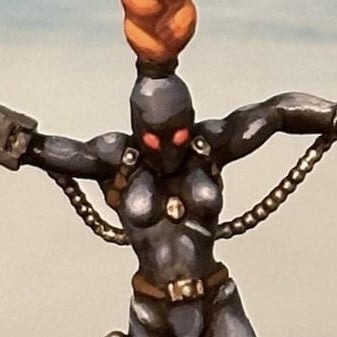Bioshock boss lookin’ ass.
”would you kindly?”
No you capitalist pig dog!
Bioshock boss lookin’ ass.
Frank Fontaine-head.
When you pinch your foreskin closed and try to pee anyway.
Sometimes you need the stream setting, sure, but the spray and mist options exist for a reason.
It would have cost you nothing to not post that, and the world would have been better off for it.
Random firefighting tidbit: after structure fires, if you were in the heat for a good while, it was a dick move to slap your buddy on the shoulder/back like “good job” because if you did, the insulation in the bunker coat would compress, and they’d get a raised welt on their skin with a mild steam burn and a hilarious hand print.
Firefighting equipment is fascinating that it works at all
Did it work or did it just steam cook the user?
With a steady supply of cold’ish water I would guess it would do a decent job of keeping you chilled, and not on fire. Maybe? This is similar in function to systems they deploy on some firetrucks that could be in danger of getting trapped in a burnover. Of course, those keep a truck exterior cool, not an early 20th century raincoat.
Either way, it looks wildly impractical, and the user must have a hard time seeing much.
It all comes down to flow rate and initial temperature.
It’s impractical, but even a typical garden hose at satp puts out enough mass to consume 16MJ/m of heat assuming it all vaporizes.
For perspective, that’s like getting hit by a Toyota Camry at highway speed every 7.5 seconds.
Massive practicality issues but from a thermodynamics perspective it passes an initial check at least
We’re in a bushfire zone, even had one get close, late last year. We looked into suppression systems, and there’s two types - one has a series of garden sprinklers positioned on your roof gutters or overhangs. They get turned on to create a large, extended fan-type spray of water. The idea is not to extinguish a fire, but to absorb the heat so it doesn’t get hot enough locally to ignite your house.
The other type - which we chose - puts agricultural sprinkler heads on your roof peaks. Fed by a substantial pump from storage tanks ( 2 x 22,500 litre/5000 gallons), they throw in intersecting circles out to a distance of about 15 metres/50 feet. The idea is to saturate your roof and walls, and surrounding foliage sufficiently that it won’t ignite.
Cool info. TIL. What about your life causes you to know that off-hand?
The real/fake answer is engineering school the real/real answer is playing “Oxygen Not Included” aka “Thermodynamics Simulator”.
Man yall smart mfs really do be just out here living among us.
My dad was a firefighter and showed me the various nozzles they used on the firehose. One of them worked kind of like this, except it sprayed out of the hose (obviously), and created a shield-like spray in front. It was used mostly for cooling down hot air and combustible gases. It also carried the benefit of soaking the corridors you were walking through. If you’re caught in a blaze, nothing will help you, but for anything else, this would be pretty useful.
It also creates a strong draft from your back which can either be a good or bad thing depending on your goal (clear out smoke)
No clue! I’m guessing the fact that it didn’t catch on suggests it’s impractical, at the very least.
It was less than effective. Perhaps situational.
In an intense fire this just made thing worse. Especially for the person wearing it. Plus supplying water to this was not ideal either. Especially as the water used here is water that couldn’t be pumped into the main hose.
I imagine they could get slowly boiled in their own water fountain
Water absorbs a tremendous amount of heat, and if it’s being continually replenished from a cold supply, the hot water won’t stay around long enough.
Depends. There are definitely times a cone pattern is called for, and you can do a lot with it.
This would make it so much worse. Water would just increase the heat transfer to the wearer.
Good home example, if you wet an oven mit and try picking up a hot pan with it, it will burn your fucking hand. If it was dry, it wouldn’t transfer the heat as fast.
That example is not a good example since a wet oven mit doesn’t get new cold water poured on it while carrying a hot pan.
Even if it did the cold water would not reach the part of the mit that is incontect with the hot pan.
Make that hose in their hands an electric guitar and they’re ready for the Waterworld equivalent of WITNESS ME
This reminds me of that umbrella someone made as a joke that uses water to repel the rain.
When you haven’t de-calcified the showerhead in years.
Early 1900s
How early exactly…?
1900s as in the decade.
Why post with so little detail for the date? It’s vaguely informative, sure. But it is the 1900’s, surely we haven’t lost this knowledge and need to date it like ancient egytian archeology.
Steampunk waterbender
Bloodborne boss phase 1












